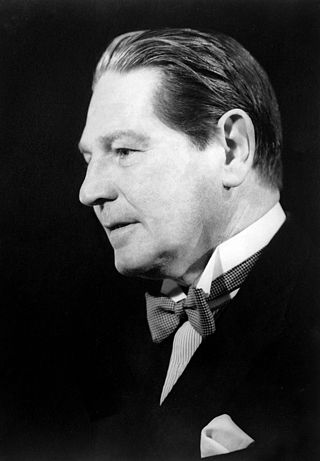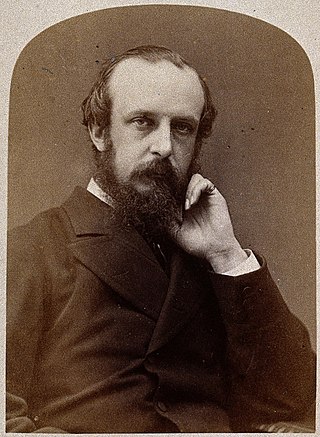
Sir Edward Mellanby was a British biochemist and nutritionist who discovered vitamin D and its role in preventing rickets in 1919.

Sir Edward Albert Sharpey-Schafer FRS FRSE FRCP was a British physiologist.

Sir John Struthers MD FRCSE FRSE was the first Regius Professor of Anatomy at the University of Aberdeen. He was a dynamic teacher and administrator, transforming the status of the institutions in which he worked. He was equally passionate about anatomy, enthusiastically seeking out and dissecting the largest and finest specimens, including whales, and troubling his colleagues with his single-minded quest for money and space for his collection. His collection was donated to Surgeon's Hall in Edinburgh.

William Sharpey FRS FRSE LLD was a Scottish anatomist and physiologist. Sharpey became the outstanding exponent of experimental biology and is described as the "father of British physiology".

The Hunterian Society, founded in 1819 in honour of the Scottish surgeon John Hunter (1728–1793), is a society of physicians and dentists based in London.
The Bradshaw Lectures are lectureships given at the invitation of the Royal College of Physicians and the Royal College of Surgeons of England. It is held on alternate years in rotation with the Hunterian Oration.

Robert "Robin" Daniel Lawrence was a British physician at King’s College Hospital, London. He was diagnosed with diabetes in 1920 and became an early recipient of insulin injections in the UK in 1923. He devoted his professional life to the care of people with diabetes and is remembered as the founder of the British Diabetic Association.
The Hunterian Oration is a lecture of the Royal College of Surgeons of England, named in honour of pioneering surgeon John Hunter and held on his birthday, 14 February, each year.
Sir Victor Ewings Negus, MS, FRCS was a British surgeon who specialised in laryngology and also made fundamental contributions to comparative anatomy with his work on the structure and evolution of the larynx. He was born and educated in London, studying at King's College School, then King's College London, followed by King's College Hospital. The final years of his medical training were interrupted by the First World War, during which he served with the Royal Army Medical Corps. After the war, he qualified as a surgeon and studied with laryngologists in France and the USA before resuming his career at King's College Hospital where he became a junior surgeon in 1924.

Allen Thomson FRS FRSE FRCSE was a Scottish physician, known as an anatomist and embryologist.

Christopher Heath FRCS was an English anatomist and general surgeon

Tobias Levitt was a South African medical doctor who wrote a textbook on the thyroid.
Samuel George Shattock FRS was a British pathologist.

Sir Henry Wade PRCSE FRSE DSO CMG was a Scottish military and urological surgeon. He was elected president of the Royal College of Surgeons of Edinburgh in 1935. His collection of anatomical specimens was donated to Surgeon's Hall in Edinburgh and is known as the Henry Wade Collection.
The Cameron Prize for Therapeutics of the University of Edinburgh is awarded by the College of Medicine and Veterinary Medicine to a person who has made any highly important and valuable addition to practical therapeutics in the previous five years. The prize, which may be awarded biennially, was founded in 1878 by Andrew Robertson Cameron of Richmond, New South Wales, with a sum of £2,000. The University's senatus academicus may require the prizewinner to deliver one or more lectures or to publish an account on the addition made to practical therapeutics. A list of recipients of the prize dates back to 1879.
John Basil Hume (1893-1974) was a British surgeon and lecturer in anatomy, who trained and mainly worked at St Bartholomew's Hospital, London. As well being an examiner in anatomy for the Royal College of Surgeons and a Hunterian Professor, lecturing in particularly diaphragmatic hernia, he is most commonly remembered for performing Anthony Eden's bile duct operation in 1953.
Alexander George Gibson was a British physician, pathologist, and cardiologist.

Sir Frederick William Andrewes was an English physician, pathologist, and bacteriologist.
The Arris and Gale Lecture, named for Edward Arris and John Gale, is an awarded lectureship of the Royal College of Surgeons. The first lecture was delivered by Sir William Blizard in 1810.
James Richard HancornMRCS LSA LRCPE was a British medical doctor and author. His contributions to medical literature include Medical Guide to Mothers and Observations on Chloroform in Parturition.











